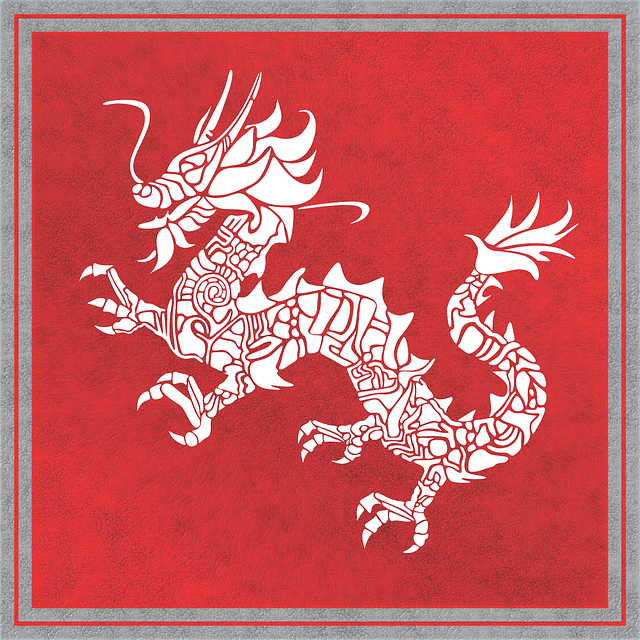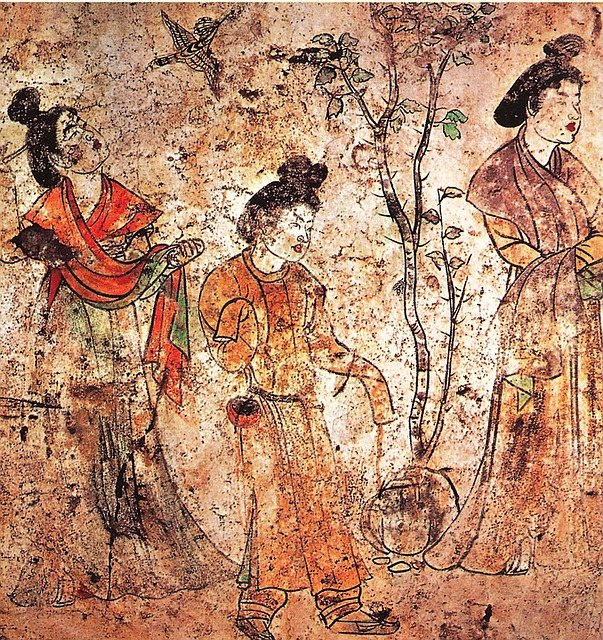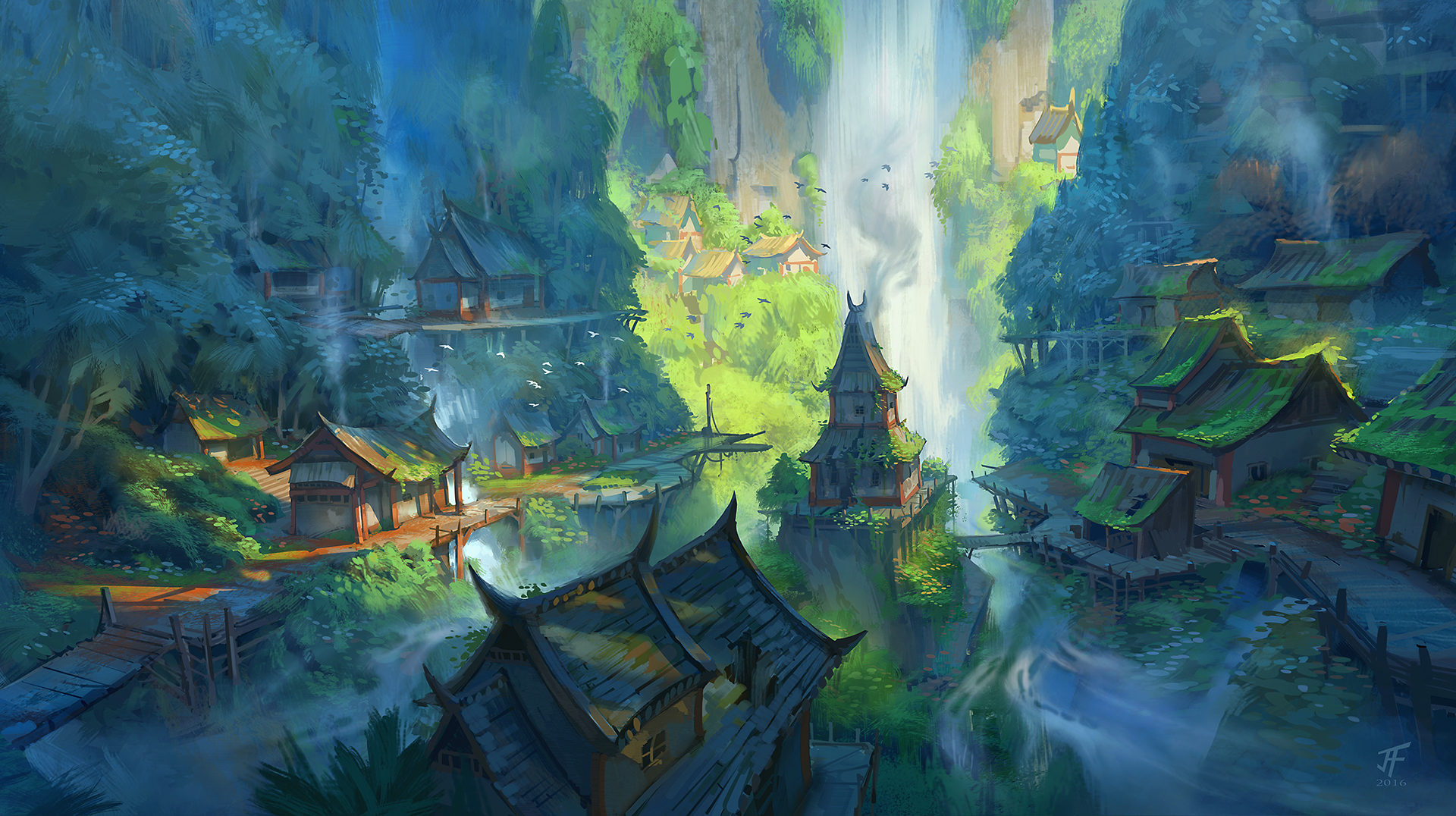Xianese Empire
The Xianese Empire holds dominion over a huge swath of eastern Aeolia, and as of 114 PR, is the most advanced and powerful nation in all of Tel. The Xianese often refer to their nation as the "Empire of the Dragon," due to the fact that its Empress, Yù Xianhè, claims immediate descent from a silver dragon, which is also cited as the source of her legitimacy to rule. In any other case, this would just be seen as an expression of nationalistic braggadocio, however, Empress Yù has sat on the Xianese throne for almost 5,000 years, lending more than a modicum of credence to her claims.
Those who have made the journey into the mountain forest capital of the empire, Shimlimga, report a wondrous metropolis of buildings built on the side of limestone karsts that take advantage of the natural caverns within, as well as mountaintop pagodas that reach beyond the clouds and marketsquares built in the canopy of the bamboo and pine trees that make up the Fàn An Pâ Forest.
Demography and Population
The nobility and upper classes of the Empire are Xianese Alvi; however, they only represent a minority of the people subject to the Empire's rule. In its long history, the Empire has conquered several non-Alvi nations that now exist as protectorates within greater Xian. In addition, individuals whose parentage is only half-Alvi (Yari) are also bound to serfdom within the Empire. These Yari, Humans, and other races actually make up the majority of the Xianese population. Furthermore, the thriving economy of Xian has attracted individuals from all over Tel to live and work in its cosmopolitan cities on the eastern coast. All of this has led to Xian being the most populous nation on Tel, with over 50 million inhabitants.
Territories
The Xianese Empire is made up of several administrative regions. The heart of the empire lies in the central mountain forest of Fàn An Pâ, which is the homeland of the Xianese Alvi. The eastern coast of Xian is home to several cities, as well as the rice farms that serve as the Empire's major agricultural center.
To the north of Fàn An Pâ lies the Goūmāyū Protectorate. Formerly, the territory of nomadic human tribes, it came under the control of the Xianese in 44 AR. To the south lies the Tien Lim Pâ Protectorate, that is comprised of the lands that once belonged to the Tenko (Xianese: Sham Mūng Kong).
Military

The Xianese military is composed of a small corps of professional Alvi soldiers that can be bolstered during wartime by the mobilization of over 650 militia units of 800 to 1200 each. These units are levied from the various subject peoples (i.e., Yari, Humans, Tenko, etc.) that make up the greater populace of the Empire. Every 6th family of the peasantry in a village or town is expected to supply one individual to serve. While military officers are career soldiers, the rank and file troops of the militia serve on a rotating basis to maintain a base level of readiness and to free the professional soldiers for duties other than garrison duty.
In between their muster, militiamen and women live in military settlements on land granted by the Empress and provide for themselves by farming, forestry, or craftsmanship. This has led to the development of a hereditary military caste among the Xianese, as households in these settlements raise families and their children follow in the footsteps of their parents. Due to the long lifespan of the Xianese Alvi, a solider is able to devote centuries to mastering a particular weapon and fighting style. This makes the Xianese military a fearsome opponent on the battlefields of Tel.
Religion
- The Harmonious Breeze (Huayue)
Foreign Relations
Diplomacy is only conducted between peers. Xian is peerless.
As Empress Yu appears to be the only national leader with draconic heritage, the Xianese view all other states as illegitimate as the Empress is the only ruler whose lineage dates back to the Third Age. Thus, the Xianese can only conceptualize relations with non-Xianese through a tributary/suzerain lens. Within Aeolia, this framework exists de facto due to Xianese economic, military, and cultural hegemony over the contient; however, it has made diplomacy difficult with nations further abroad, as the Xianese consider them to be inherently populated by barbarians.
Trade & Transport
In addition to the Dragon Silk Road, Xian is engaged in thriving maritime trade with the Alvi nations of Dhenia, as well as other non-Alvi nations as far abroad as M'Gwandi in central Aerisca. This has drawn a multitude of expatriate merchants to settle in the bustling coastal cities located on Xian's eastern coast, Ngamhòn in particular.







